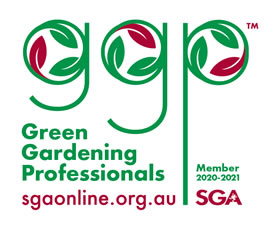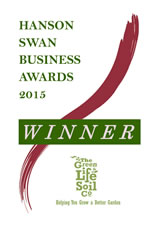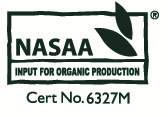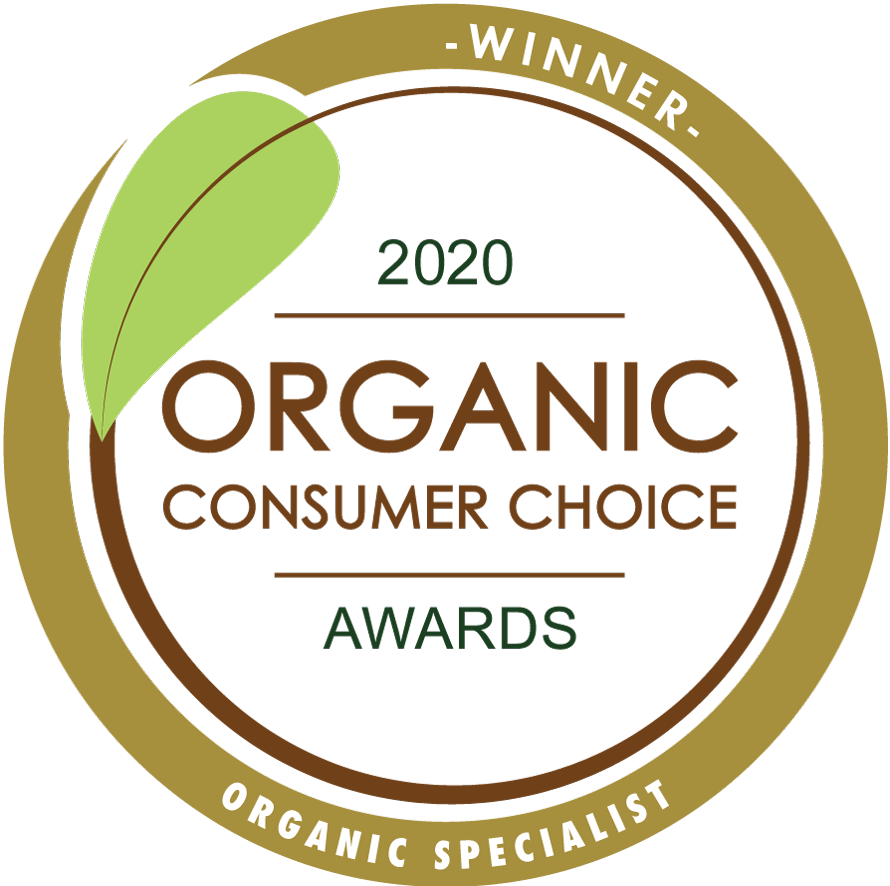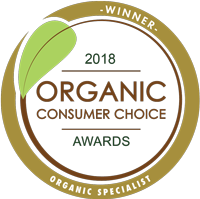| item(s), Total: $0.00 View Cart |
| Shopping cart is empty. |
Welcome to May!
So what else is happening in May?? There's lots! The first Sunday in May is "International Permaculture Day" and there's a free family friendly festival taking place down at Murdoch Uni - click here for all the details. And the first Saturday in May is "World Naked Gardening Day" [so watch out on social media if you'd like a giggle; or if it's not your thing, make sure you stay away from social media that day (you have been warned!)]. The City of South Perth has its Tree Festival & nursery tour on 7th May, and 7-13th May is "International Composting Awareness Week"; "World Bee Day" is May 20th & the "International Day for Biological Diversity" is May 22nd. Phew! So much stuff happening - take your pick!
Enjoy your garden! Linda & the team @ The Green Life Soil Co In this newsletter:Jobs to do in the May garden Jobs to do in the May garden
What to Plant NowAutumn/Winter has been a little late arriving so I believe there's still time to grow many things from seed if you get cracking ASAP. It's fun to grow your own vegies from seed, but it's always a gamble to time seed raising just right- it's safer using seedlings (and you get a jump start of 4-6 weeks to harvest). Personally I like to do a mixture of both. Seedlings can get things off to a flying start and then you can raise seeds for your succession planting to follow up in coming weeks. Some winter vegies to plant now are:
We've sold out of our Garlic for the season - so if you're still needing some, I'd suggest you visit a good local growers' mart (or farmers' market) and find some local WA grown garlic to plant. It's not too late but you'll want to get it in the ground asap. It's very important from a biosecurity perspective NOT to plant imported/interstate garlic which is intended for eating (not planting) and may potentially introduce disease. We still have WA grown Certified Organic Seed Potatoes in stock. We have “Laura” which is an oval red skinned potato great for roasting, mashing, wedges and baking; and "Delaware" a popular all purpose brown skinned potato good for baking, mashing and boiling, and "Dutch Cream" a very popular brown skinned potato with a creamy yellow flesh that is good for frying, mashing and boiling. We have "Royal Blue", "Prince of Orange", "Neptune" (the grower's favourite!) and "Kipfler" too. These varieties also come from the South West of WA but are conventionally grown. There's limited stock available so don't delay! Want tips on the best way to grow spuds? Or Garlic? Check out our fact sheets here. Our handy 'when to plant guide for Perth' is FREE to download - once you've signed up as a GLSC member you can sign back in anytime to download all of our useful guides. Potatoes - Determinate or Indeterminate? That is the question...
When people talk about determinate and indeterminate potatoes, they're usually talking about the structure of the plant above ground. A determinate potato plant will stop growing after reaching a certain height, while an indeterminate one will keep growing and producing foliage. However, this doesn't necessarily translate to the growth of the tubers, which is what most people are interested in when it comes to potatoes. We've always thought that hilling up potatoes will lead to more tubers being formed - which is the concept of planting in potato towers. But commercial growers certainly don't go to this trouble. Is it worth it? It seems hilling does work - but only to a point; and whether the variety makes much difference? The jury is undecided. (Note: hilling is definitely beneficial to ensure good drainage (potatoes will rot if too wet), and also to keep tubers that form away from the light - you don't want them going green.) Generally the difference between potatoes is the above ground growth, and its flowering habit (yes, potatoes often flower). Determinate potatoes normally grow to about 50 - 70cms tall. Indeterminate varieties can grow stems as metres long, (hence the name 'potato vine'). While a determinate variety will produce a single crop of flowers & berries, ripening at roughly the same time, an indeterminate plant can flower and form new berries along the length of its above ground stems, as it continues to grow.
Potato tubers are not fruits; they are modified stem material and remain connected and actively growing until the season ends for the plant. (In an indeterminate tomato crop - ripe fruit is picked or would simply fall off when ripe. New flowers & fruit form and receive energy from the plant. This succession does not occur in potatoes.) So if indeterminate potatoes did produce additional levels of tubers, tuber size and yield would be smaller, which is not something that most people would want. So determinacy is not really a useful concept with potatoes, (unless you are interested in the flowering or the structure of the foliage). When it comes to tubers, it makes little difference. Potatoes all form tubers in the same way, determinate or indeterminate, whether you grow them straight in the ground or in a tower. It seems that the most important thing is to make sure you have healthy and vigorous plants - whether they're determinate or indeterminate or in between; if the plant can reach maturity faster, with healthy foliage, the plant will be able to produce enough energy to form good tubers. The longer the plant can actively grow, the more (and larger) potatoes you're likely to achieve. Yield seems more to do with healthy soil and early planting. If you have earlier maturing varieties you get to harvest earlier and can then plant other vegies (or successive potato crops - so you'll end up with more potato crops in less space). If you have later season varieties you'll have them in the ground longer (taking up space but you may end up with larger and/or more spuds to harvest). So it's swings and roundabouts from what I can research.
So don't be disheartened. It seems there's no need to really know or care whether your spuds are one or the other. Yay! More brain space for something else... What IS important (at least to me!) is the taste of organically home grown spuds; which no matter if you like 'em boiled, mashed, roasted, chipped or in soups and stews - is something that can't be disputed! Cabbage - King of Cruciferous Vegetables?
Winter is Brassica season! Most of us love home grown broccoli and cauliflower; and kale? Well, kale divides the community... However, the humble cabbage rarely gets a mention. I think it's seen as the unfashionable awkward relative - and often overlooked. But in reality, cabbage deserves a spot in our winter vegie garden. It doesn't have to be served over boiled and soggy - with fermented sauerkraut now recognised as being sooo beneficial to our gut health - why not grow some and make your own? Here's some tips & info if you'd like to give the under represented royal vegie a go this season. Cabbage can be raised from seed, or bought in punnets and planted out as seedlings (choose small seedlings over leggy ones - and deep plant). There are a huge number of varieties; including red coloured, crinkly 'savoy' types, chinese cabbages (which are more conical in shape) and smaller growing varieties which are great for growing in containers or tight spaces. Some cabbage varieties can grow large - so do your research! Plant them out at least 50cms apart to give them room and ensure good light and airflow. While outer leaves can be picked and eaten anytime, they're often coarse - the sweet head that forms in the centre is the traditional cabbage we're used to eating. If you plant out cabbages widely spaced, you can always throw in bok choi, english spinach, lettuce or salad greens in between them - the faster growing plants will be finished before the cabbages need the space.
Cabbages can be slow growing - you'll be harvesting around 3 months after planting. It's fun to see the tight central heads develop - pick when they're at a size you like! Remove the whole plant & compost what you don't eat. If you have chickens, they will love cleaning up the remnants of your cabbage plants.
Cabbage is very good for you - high in phytochemicals like other brassicas which are said to reduce cancer risk. They contain a range of vitamins and minerals (depending on how good your soil is!), fibre, and other compounds that are said to reduce inflammation. Cabbage leaves have been used as poultices for wound healing; and as many women will attest - their cold leaves are a blessing to alleviate discomfort that may occur when breastfeeding. The best way to eat cabbage (in my opinion) is to wash, slice and then steam in its own juices (rather than adding lots of water). Add a knob of butter, and salt and pepper. Cover, and toss the pan a few times while cooking to distribute the butter and turn the cabbage. Wait until its wilted and semi-transparent, but still has a bit of crunch. Overcooking cabbage releases volatile compounds that smell like rotten eggs - I'm sure something you've experienced at least once in your life. Cabbage can also be eaten raw in salads, roasted, stir-fried or fermented and preserved with salt to make sauerkraut or kimchi. Leftover cooked cabbage? Bubble and Squeak! (You're welcome!) Cabbage Pests
So this winter - try the (not so) humble cabbage! I'm sure you'll be a convert to this mild mannered, bespectacled Clark Kent type of super vegetable! Photo Competition Winner
Bob had this to say about his garden: This is the harvest of Garlic I put in earlier this year. Congratulations Bob - I bet it's a nice surprise to win!!
But there's another reason you should get snapping STRAIGHT AWAY... Win tickets to the Perth Garden FestivalWe've got some double passes to give away to the Perth Garden Festival.
It's super easy!! Send in your photos of your garden and/or produce by 4.00pm Tuesday, 9th May to be in the draw! VIP Special Offer
Autumn is a great time to top up mulch - and coarse mulch will let the rain penetrate to the soil, and the mulch will help slow down weed growth emerging with the rains. So top up around your fruit trees, roses, cottage plants etc. with our premium hardwood mulch. We sell it in 40L bags (the bags are locally produced and made from 100% recycled pool covers!). Normally they're $16 each (reducing to $14 if you buy 3 or more.) For our VIP's this month, we have bags at $12 each (reducing to $10 each if you buy 3 or more). Need more? Come on in and grab a trailer load. Normally that would set you back $124. For VIP's this month, you can pick up a trailer load for $100. Online shopping - you must log into the Members section of the website to see your discounted bags. In store - please mention the VIP offer to our team to receive the discount. Retailer UpdatePlease support your local independent retailer who supports us! The specialist retailers listed here will be happy to give you gardening advice and help you with our products - please call to check what lines they carry as they can't stock all of our products (but may be willing to get stock in for a custom order - if you ask nicely!). Some of these fabulous retailers also offer a home delivery service (marked with *) - so why not go local? (Please contact the store directly for details.)
Ardess Nursery (Albany) 9842 9952 THANK YOU for being part of our Green Life family! We hope to see you in store soon. Check out our newsletter next month & stay up to date with our Facebook and Instagram pages for announcements, stock arrivals and general good gardening vibes! |

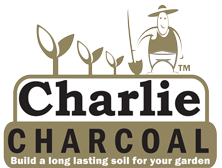

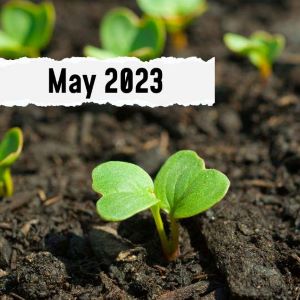 At last it seems we're experiencing some "proper" Autumn weather - lovely sunny days; but with chilly mornings! It's nice to have received some rain - but for a while there I was thinking we were going from Summer straight to Winter. While we definitely need more rain - let's hope fine weather will grace us for the
At last it seems we're experiencing some "proper" Autumn weather - lovely sunny days; but with chilly mornings! It's nice to have received some rain - but for a while there I was thinking we were going from Summer straight to Winter. While we definitely need more rain - let's hope fine weather will grace us for the 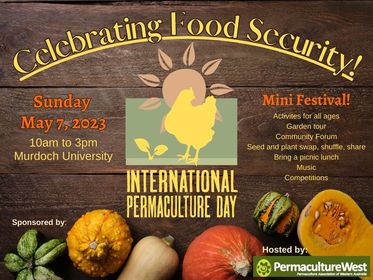 So there's loads to do over the coming few weeks - around town AND in your garden! Time to get outside and enjoy this fabulous weather.
So there's loads to do over the coming few weeks - around town AND in your garden! Time to get outside and enjoy this fabulous weather.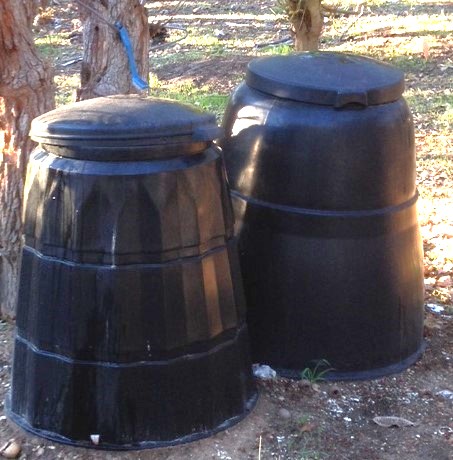 Composting: If you haven't checked your compost in a while, now is the perfect time to do so. Turning your compost will aerate and oxygenate your pile allowing the essential three natural elements air, moisture and heat to continue the decomposition process. Turning your pile will also solve some composting problems such as odors. A great way to test your compost pile is to feel it. If it feels too dry you may have too much brown matter (leaves, straw and paper). If it feels too wet you may have too much green matter (vegetable scraps, grass clippings). Here's a link to more
Composting: If you haven't checked your compost in a while, now is the perfect time to do so. Turning your compost will aerate and oxygenate your pile allowing the essential three natural elements air, moisture and heat to continue the decomposition process. Turning your pile will also solve some composting problems such as odors. A great way to test your compost pile is to feel it. If it feels too dry you may have too much brown matter (leaves, straw and paper). If it feels too wet you may have too much green matter (vegetable scraps, grass clippings). Here's a link to more 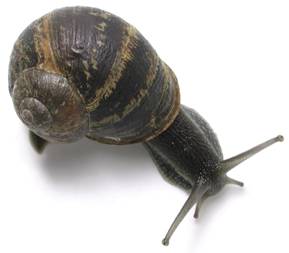 Pests: With the rain coming it brings in those pesky snail and slugs. Making an adventure of going out there with a torch and a bucket at night collecting snails can be fun to do with kids, and also quite effective; you can dramatically bring down their numbers over the course of a few nights! You can squish them or drop them in some hot salty water. See our free
Pests: With the rain coming it brings in those pesky snail and slugs. Making an adventure of going out there with a torch and a bucket at night collecting snails can be fun to do with kids, and also quite effective; you can dramatically bring down their numbers over the course of a few nights! You can squish them or drop them in some hot salty water. See our free 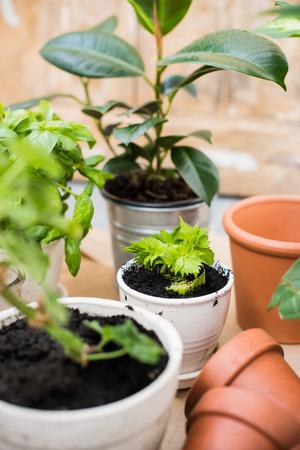 Look after your indoor plants: Testing your indoor plants and their soil moisture is important, and as simple and easy as sticking your finger in the dirt - quite literally. Insert your finger a few cms into the soil. If the soil feels dry your plant probably needs a drink. If it feels wet and soggy it may have too much water and you might need to drain any excess. You may find as it gets colder you have to water indoor plants less and only have to give plants a drink when soil starts to feel dry (rather than the usual scheduled weekly or fortnightly in hotter months). If your soil remains damp, you're likely to attract fungus gnats, which are annoying little flies that hang around your plants (and seem to always fly (a) up your nose, and (b) land in your glass of wine). See more
Look after your indoor plants: Testing your indoor plants and their soil moisture is important, and as simple and easy as sticking your finger in the dirt - quite literally. Insert your finger a few cms into the soil. If the soil feels dry your plant probably needs a drink. If it feels wet and soggy it may have too much water and you might need to drain any excess. You may find as it gets colder you have to water indoor plants less and only have to give plants a drink when soil starts to feel dry (rather than the usual scheduled weekly or fortnightly in hotter months). If your soil remains damp, you're likely to attract fungus gnats, which are annoying little flies that hang around your plants (and seem to always fly (a) up your nose, and (b) land in your glass of wine). See more 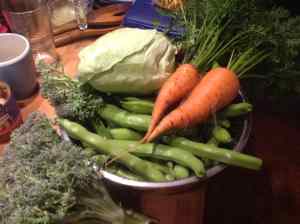 Artichokes (Globe - it's still a little early to find Jerusalem Artichokes but they're not far away!), Asian greens, Beetroot, Broad Beans, Broccoli, Cabbage, Carrots, Cauliflower, Celery, Coriander, Dill, Garlic, Kale, Kohl Rabi, Leek, Lettuce, Onion, Parsnip, Peas, Potatoes, Radish, Silver beet, Snow peas, Spinach, Spring Onion, Strawberries, Swede, Turnip.
Artichokes (Globe - it's still a little early to find Jerusalem Artichokes but they're not far away!), Asian greens, Beetroot, Broad Beans, Broccoli, Cabbage, Carrots, Cauliflower, Celery, Coriander, Dill, Garlic, Kale, Kohl Rabi, Leek, Lettuce, Onion, Parsnip, Peas, Potatoes, Radish, Silver beet, Snow peas, Spinach, Spring Onion, Strawberries, Swede, Turnip.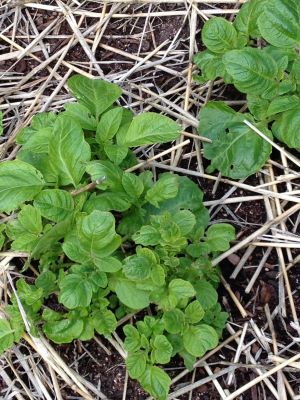 Potatoes are in the Solanum family - which means they're related to Tomatoes and Chillies. Tomato growers are usually familiar with the terms 'determinate' and 'indeterminate' (Determinate tomatoes stop growing after a certain point and fruit tends to form around the same time, while indeterminate ones keep growing and producing fruit over a longer period.) So - because potatoes and tomatoes are distant cousins - people often talk about whether potatoes are determinate or indeterminate. However, there's very little information available about which varieties are which, and even commercial growers don't know - and really don't care. So why not? Well, it seems these terms aren't very helpful when it comes to potatoes.
Potatoes are in the Solanum family - which means they're related to Tomatoes and Chillies. Tomato growers are usually familiar with the terms 'determinate' and 'indeterminate' (Determinate tomatoes stop growing after a certain point and fruit tends to form around the same time, while indeterminate ones keep growing and producing fruit over a longer period.) So - because potatoes and tomatoes are distant cousins - people often talk about whether potatoes are determinate or indeterminate. However, there's very little information available about which varieties are which, and even commercial growers don't know - and really don't care. So why not? Well, it seems these terms aren't very helpful when it comes to potatoes.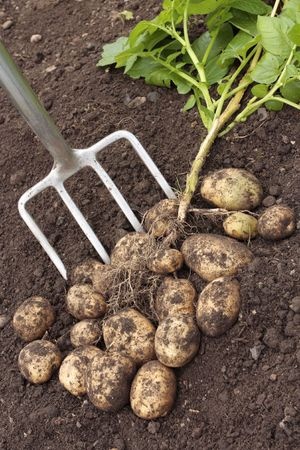 Our potato producers in Australia seem to think that the popular varieties here are 'in between determinate and indeterminate' - which isn't very helpful; but - at the end of the day - also isn't very important; so it seems. What really matters to commercial growers is their yield. And this seems to improve with later maturing potatoes - which keep growing until they die back at the end of their season. But how do you judge early or late maturity? It can vary so much with the season, the microclimate in your own garden (sun/shade/watering) etc. Sigh. (Potatoes begin to form 6-8 weeks after planting, and you harvest them once tops die back; usually late spring - but we're usually talking 3-5 months after planting until maturity. You can always carefully dig around to find potatoes to harvest and to check their development. If frost kills off your potatoes early - leave them in the ground and hopefully they'll re-sprout.)
Our potato producers in Australia seem to think that the popular varieties here are 'in between determinate and indeterminate' - which isn't very helpful; but - at the end of the day - also isn't very important; so it seems. What really matters to commercial growers is their yield. And this seems to improve with later maturing potatoes - which keep growing until they die back at the end of their season. But how do you judge early or late maturity? It can vary so much with the season, the microclimate in your own garden (sun/shade/watering) etc. Sigh. (Potatoes begin to form 6-8 weeks after planting, and you harvest them once tops die back; usually late spring - but we're usually talking 3-5 months after planting until maturity. You can always carefully dig around to find potatoes to harvest and to check their development. If frost kills off your potatoes early - leave them in the ground and hopefully they'll re-sprout.)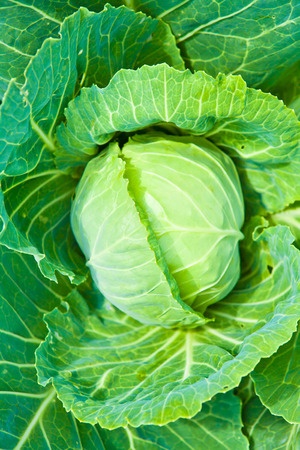 The time has come,' the Walrus said, To talk of many things: Of shoes — and ships — and sealing-wax — Of cabbages — and kings.
The time has come,' the Walrus said, To talk of many things: Of shoes — and ships — and sealing-wax — Of cabbages — and kings. 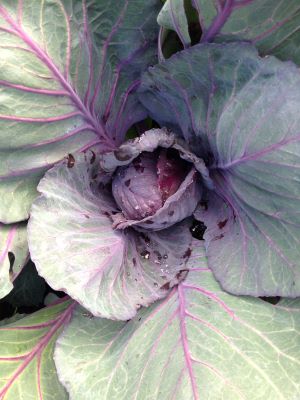 Cabbages (in fact all brassicas) are 'gross feeders' - meaning they have high requirements for nutrients in order to thrive. So if you have fresh vegie mix it's an ideal first crop. If you're planting out into existing beds, top up with compost, manure, blood and bone etc. - a good source of nitrogen for leaf growth is essential. During their growing season, feed with fish or kelp every 2-3 weeks to keep them thriving. Cabbage love the cold, and can tolerate slightly alkaline and salty soils - so a good choice if you're near the coast! If we have a dry spell - remember to water - cabbage need plenty of moisture to produce large, juicy leaves.
Cabbages (in fact all brassicas) are 'gross feeders' - meaning they have high requirements for nutrients in order to thrive. So if you have fresh vegie mix it's an ideal first crop. If you're planting out into existing beds, top up with compost, manure, blood and bone etc. - a good source of nitrogen for leaf growth is essential. During their growing season, feed with fish or kelp every 2-3 weeks to keep them thriving. Cabbage love the cold, and can tolerate slightly alkaline and salty soils - so a good choice if you're near the coast! If we have a dry spell - remember to water - cabbage need plenty of moisture to produce large, juicy leaves.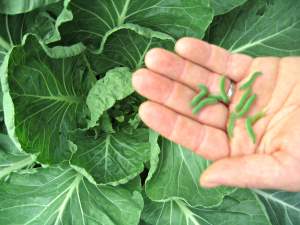 Unfortunately insect pests know a good thing when they see one. And Cabbage definitely is a favourite for pests like aphids, cabbage moth (diamond backed moth), cabbage butterfly, slugs and snails. And the ever present rat. Companion planting things like dill, land cress, celery, onions, oregano, garlic, chives, rocket, nasturtiums, marigolds may be helpful in confusing and discouraging pests (or acting as a decoy plant). Otherwise, netting your cabbages against insects is a good idea - after all they don't require pollination. Inspect cabbages regularly for signs of caterpillar damage (look for their black balls of frass (poo)), hand pick, and if necessary, use Dipel. Using molasses (2 tblsp/1L warm water - allow to cool) sprayed every 2 weeks is another popular caterpillar deterrent. Aphids can usually be hosed off, or treated with things like insecticidal/potassium soap or neem oil. Snails and slugs can be prevented by using beer traps or iron based pellets. [If you need advice for least harmful pest treatments - please talk to one of our team!]
Unfortunately insect pests know a good thing when they see one. And Cabbage definitely is a favourite for pests like aphids, cabbage moth (diamond backed moth), cabbage butterfly, slugs and snails. And the ever present rat. Companion planting things like dill, land cress, celery, onions, oregano, garlic, chives, rocket, nasturtiums, marigolds may be helpful in confusing and discouraging pests (or acting as a decoy plant). Otherwise, netting your cabbages against insects is a good idea - after all they don't require pollination. Inspect cabbages regularly for signs of caterpillar damage (look for their black balls of frass (poo)), hand pick, and if necessary, use Dipel. Using molasses (2 tblsp/1L warm water - allow to cool) sprayed every 2 weeks is another popular caterpillar deterrent. Aphids can usually be hosed off, or treated with things like insecticidal/potassium soap or neem oil. Snails and slugs can be prevented by using beer traps or iron based pellets. [If you need advice for least harmful pest treatments - please talk to one of our team!]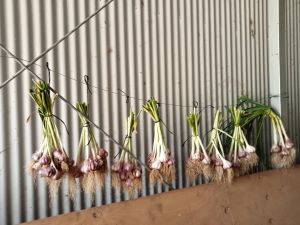 This month I didn't receive any photo entries - have you all been too busy in your garden to send in photos?? So I've gone back through my emails, and have picked Bob Hand who sent in pictures of his Garlic harvest late last year. I know you're all busily planting YOUR garlic about now - so hopefully this will be inspirational for you!!!
This month I didn't receive any photo entries - have you all been too busy in your garden to send in photos?? So I've gone back through my emails, and have picked Bob Hand who sent in pictures of his Garlic harvest late last year. I know you're all busily planting YOUR garlic about now - so hopefully this will be inspirational for you!!!  So be like Bob - send me in your photos with a note about what you're growing; and you could be the winner next month of our $50 store credit. Photos can be emailed (use the subject line 'photo competition' or sent in via Facebook. You can send in your photos any time.
So be like Bob - send me in your photos with a note about what you're growing; and you could be the winner next month of our $50 store credit. Photos can be emailed (use the subject line 'photo competition' or sent in via Facebook. You can send in your photos any time.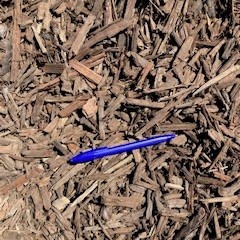 GLSC now stocks a premium, chunky hardwood mulch. Its a dark brown colour, naturally composted, and chunky. It doesn't have the fibrous content that the economulch has; so will be longer lasting in your garden.
GLSC now stocks a premium, chunky hardwood mulch. Its a dark brown colour, naturally composted, and chunky. It doesn't have the fibrous content that the economulch has; so will be longer lasting in your garden.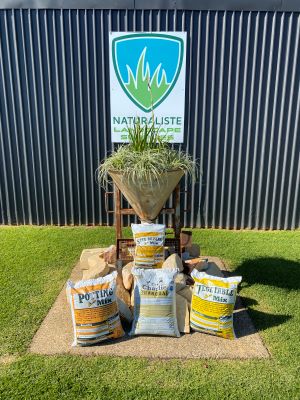 Daisy Field Organics - FremantleGarden Elegance - Subiaco 9381 2197
Daisy Field Organics - FremantleGarden Elegance - Subiaco 9381 2197






